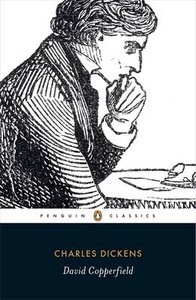David Copperfield

Editorial Penguin UK
Fecha de edición junio 2004
Idioma inglés
EAN 9780140439441
1024 páginas
Libro
encuadernado en tapa blanda
Resumen del libro
David Copperfield is the story of a young man's adventures on his journey from an unhappy and impoverished childhood to the discovery of his vocation as a successful novelist. Among the gloriously vivid cast of characters he encounters are his tyrannical stepfather, Mr Murdstone; his brilliant, but ultimately unworthy school-friend Steerforth; his formidable aunt, Betsey Trotwood; his nemesis, the eternally humble Uriah Heep; frivolous, enchanting Dora; and the magnificently impecunious Micawber, one of literature's great comic creations. In David Copperfield the novel he described as his favourite child' Dickens drew revealingly on his own experiences to create one of his most exuberant and enduringly popular works, filled with tragedy and comedy in equal measure.
This edition uses the re-edited text of the first volume publication of 1850, and includes updated suggestions for further reading, a revised chronology and expanded notes. In his new introduction, Jeremy Tambling discusses the novel's autobiographical elements, and its central themes of memory and identity.
Biografía del autor
p Charles Dickens nació en Portsmouth en 1812, aunque pasó la mayor parte de su infancia en Londres y Kent. No empieza a acudir al colegio hasta los nueve años. Tras el encarcelamiento de su padre por el impago de deudas, su familia se traslada a la cárcel, ya que la legislación de la época permitía que los familiares compartieran la celda del moroso. El joven Dickens se ve obligado entonces a trabajar como operario en una factoría de betún para zapatos bajo duras condiciones laborales. Con el dinero que ganaba pagaba su propio hospedaje y ayudaba a su familia. Tras una formación prácticamente autodidacta, consiguió un puesto como secretario de un abogado en 1827, y poco después se convirtió en cronista parlamentario. Gracias a este oficio pudo publicar en 1833 su primera obra, i Esbozos /i , bajo el seudónimo de Boz. En esta línea continuó publicando, hasta que su obra i Los papeles póstumos del Club Pickwick /i lo convirtió en un autor aclamado mundialmente. Que la mayoría de su obra fuera publicada en entregas periódicas le daría gran popularidad e influencia entre el público inglés. Viajó por Europa y Estados Unidos, donde era muy conocido, aunque tras la crítica que realiza del Nuevo Mundo en su novela i Martin Chuzzlewit /i , se ve rechazado por la sociedad norteamericana. Entre sus obras más célebres se encuentran i Oliver Twist /i , i Canción de Navidad /i y, sobre todo, i David Copperfield /i , del que vendería en poco tiempo más de 100.000 ejemplares y que resume de modo magistral sus penurias infantiles. En el ámbito personal disfrutó de un fecundo matrimonio que le aportó diez hijos pero que finalmente se vio perturbado por las relaciones extramatrimoniales que Dickens mantenía con una actriz de teatro. Hombre enérgico y comprometido, compaginó su extensa labor literaria con otros campos de la cultura tales como la dramaturgia y la edición (fue fundador del semanario Household Words, donde publicaría por entregas dos de sus obras más conocidas, i Casa desolada /i y i Tiempos difíciles /i ). Administró diversas asociaciones caritativas y luchó por conseguir reformas sociales que favorecieran a las clases obreras, así como por la abolición de la esclavitud en Estados Unidos. Murió en Gadshill Place, el 9 de junio de 1870, tras sufrir una apoplejía. Fue incinerado, y sus restos reposan en la Esquina de los Poetas de la Abadía de Westminster.<br>








